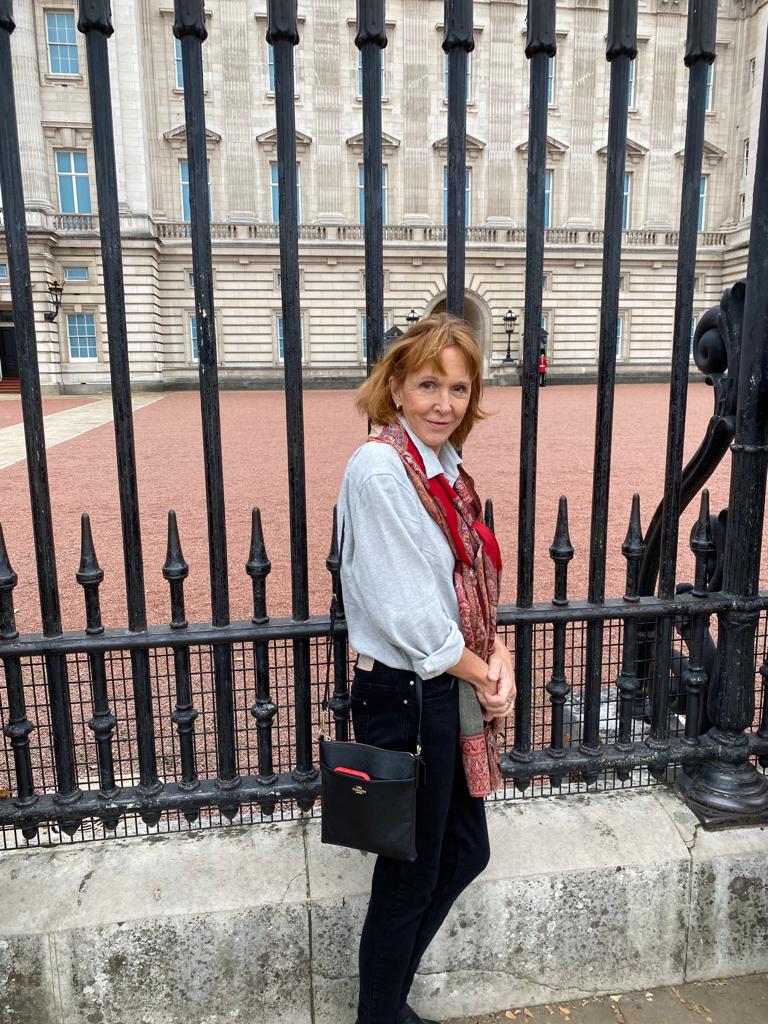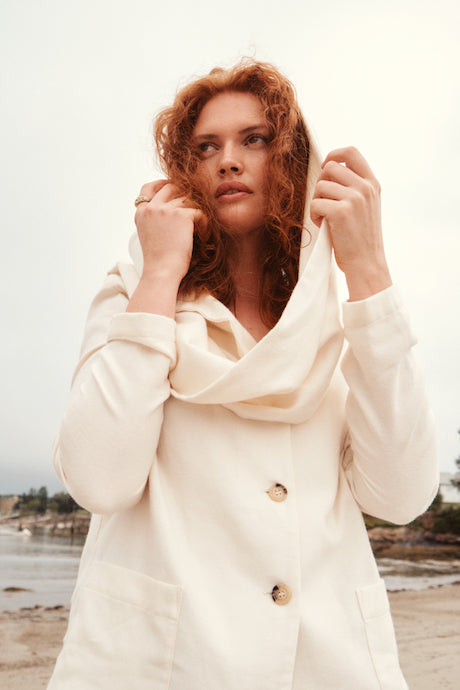When Althea founded GRAMMAR, she was on a mission to find the perfect organic poplin—a classic shirting fabric made of tightly woven cotton. Since the brand’s beginning, its iconic white shirts and timeless dresses have been produced in Global Organic Textile Standard-certified (GOTS) poplin. This certification guarantees that all stages of production from growing the cotton to making the garment are ethical and sustainable. As a designer, Althea understands her signature poplin inside and out: its structure, its weight, its drape. While she considers it to be a year-round fabric, she recognized the need for a warmer and cozier option for cooler weather.
For the Fall/Winter 2021 collection, Althea went searching for a new GOTS-certified fabric: a luxurious cotton flannel. She had no idea if such a fabric even existed. In the following interview, which has been edited for brevity, Althea shares her process for finding a fabric that she loves and that reflects GRAMMAR’S commitment to sustainable and ethical fashion.














